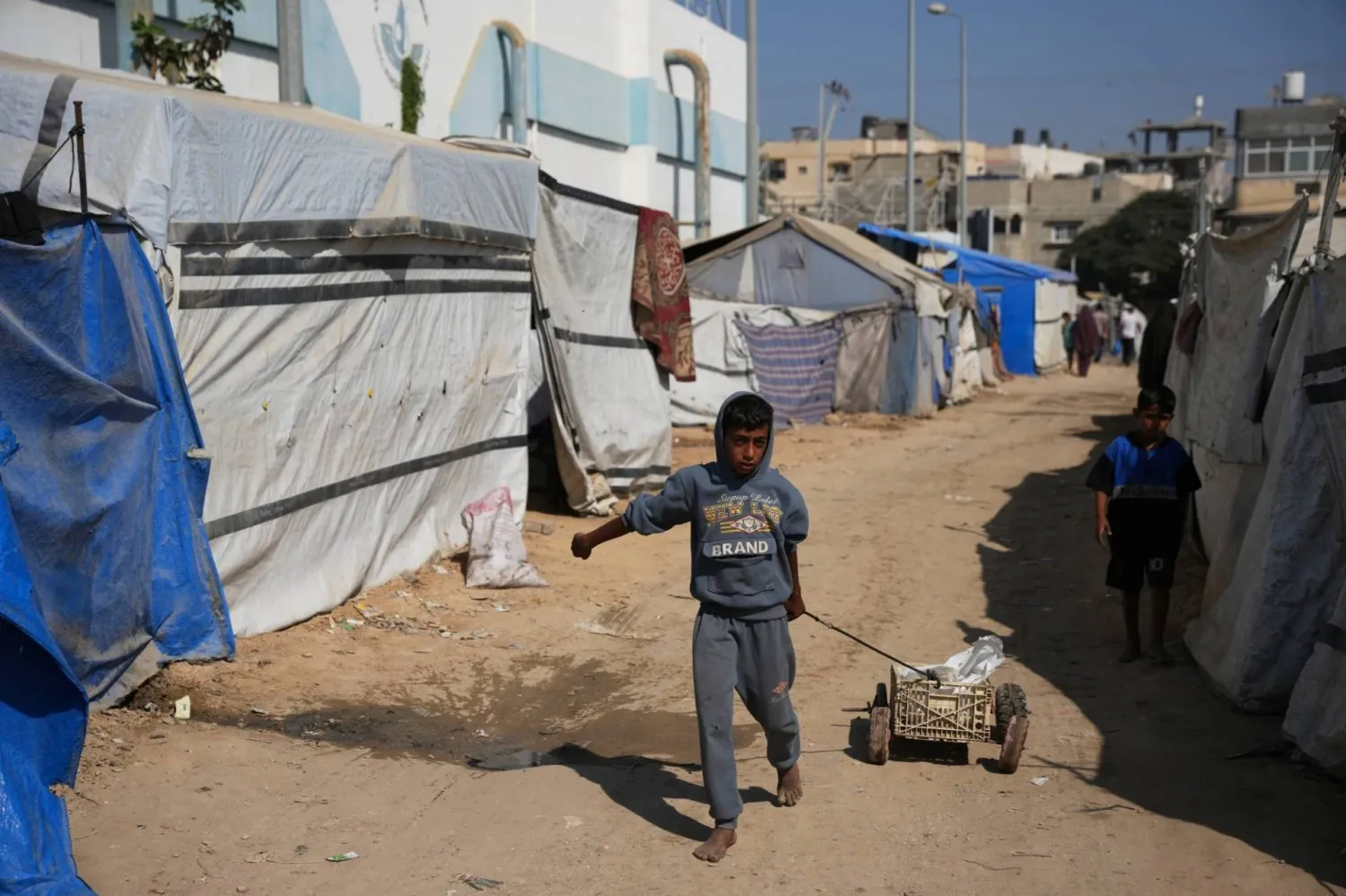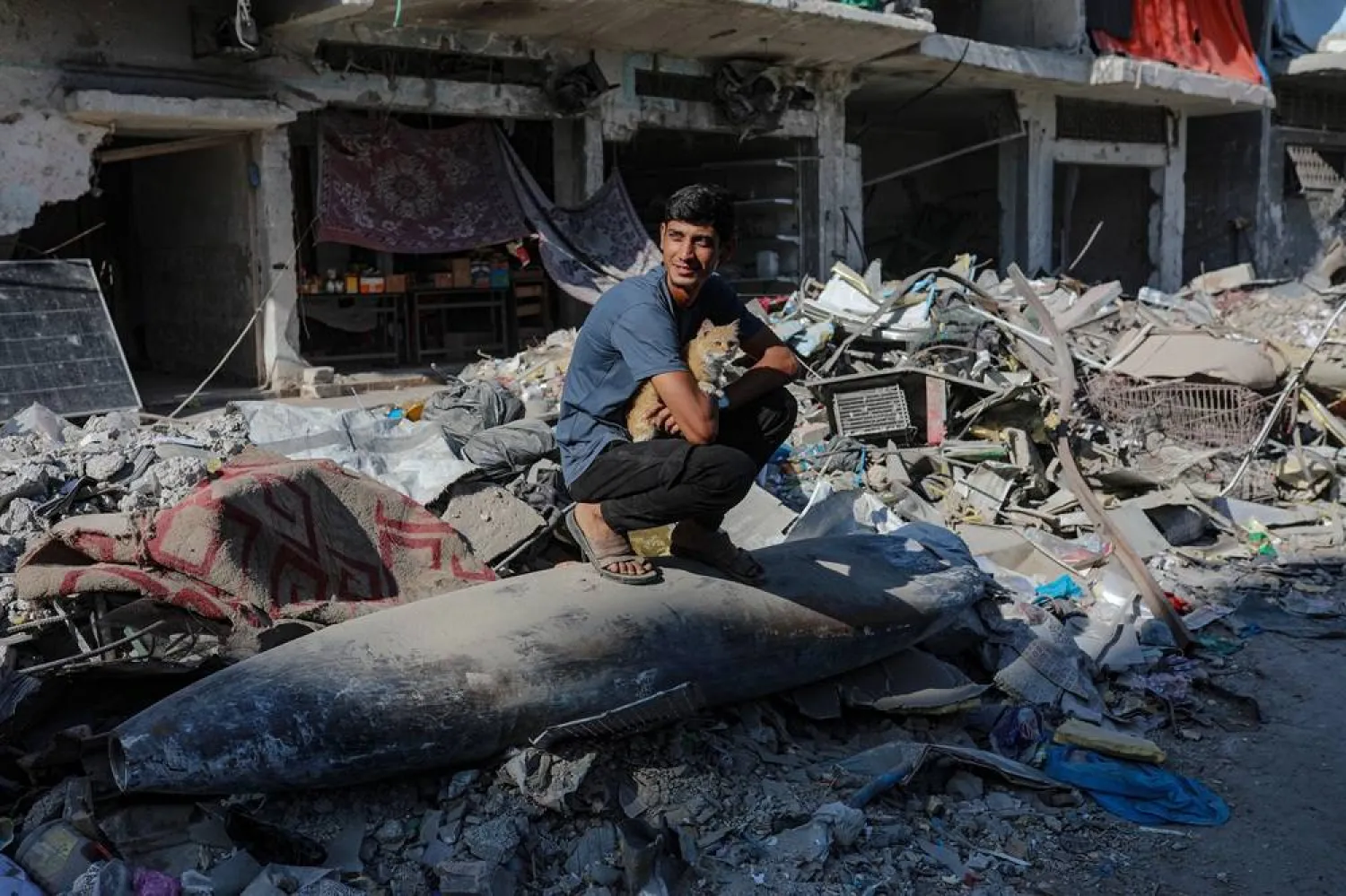The town of Kafranbel this week became the latest to be seized in a deadly regime onslaught against the last opposition bastion in northwestern Syria.
Known for its witty posters, murals and cartoons, the city has long been a symbol of humourous defiance to Damascus and its recapture by the regime spells a heavy blow, activists say.
Kafranbel falls in Idlib province bordering Turkey and was one of the first to join the revolutionary fervour that swept Syria in 2011.
Ibrahim Sweid, 31, said he was at the first protest in Kafranbel in April 2011, just weeks after the uprising kicked off against President Bashar al-Assad's regime.
The town was once "the icon of the revolution, its resounding lute, the spark of the uprising in the Syrian north", he said, AFP reported.
"Our aim was first and foremost to bring down Assad's regime."
Sweid was among activists who set up the town's media office to document protests and then the bombardment as the country slid into civil war.
But today its members are long gone -- displaced, in exile, or killed.
Among those lost are Raed Fares, a charismatic cartoonist and radio host who was killed by unknown gunmen in 2018.
He and others had made the town famous for the witty slogans and giant political cartoons they held up in Arabic and English at the town's demonstrations.
Sweid, along with his wife and their three children fled 10 months ago after the Russia-backed regime increased its bombardment of the town. However, he returned from time to time, witnessing the town slowly sink into rubble, continuing to work as a journalist for a local television channel.
In 2012, Kafranbel was rocked by fighting between regime fighters and defectors from Assad's army, before it slipped out of the government's control.
Sweid said he remembers filming the joy of residents -- including the late Raed Fares -- that summer.
"But now Raed's dead and so is Kafranbel," he laments.
Only last Tuesday, he crouched on its outskirts, watching helplessly from afar as the missiles rained down.
"I left the area when I was sure it had fallen to the enemy. I looked at it one last time and left it at one o'clock in the morning," he said.
"After nine years of revolution, Kafranbel was occupied -- a town that had managed to give a voice to Syrians worldwide with its cartoons and signs."
A town of some 20,000 people, Kafranbel stood out among its neighbours for its creative approach to activism.
"I have a dream. Let freedom ring from Kafranbel," read one sign in 2012 in English, playing on the town's name and echoing the words of Martin Luther King.
A poster the same year complained of congested skies, and demanded that policemen regulate the traffic of the warplanes overhead.
According to AFP, by 2015, Kafranbel was part of a large region under the control of opposition forces.
Two years later, it was overrun by the militants of Syria's former Al-Qaeda affiliate who still dominate the wider region today.
Fares said at the time he founded Fresh FM in 2013 to counter "fundamentalist narratives" in Idlib. After that, he was repeatedly targeted by armed groups.
A first wave of residents fled the town last year, while others held out before joining the exodus over the past few months.
The onslaught on the wider region since December has displaced almost 950,000 people from their homes, more than half of them children, the United Nations says.
Bilal Bayush, 27, said Kafranbel over the past two months had become uninhabitable.
"If you were sick, there was nowhere to be treated or to buy medicine," said the father of two.
"Not a pillar has been left standing. My house is probably destroyed," said the activist, who was arrested as a student at Aleppo University before joining other citizen journalists in Kafranbel.
"For every event in Kafranbel, you'd see a cartoon on the walls of Kafranbel, a sign at its protests," he said.
Today nothing is left but memories.
"We use to sing and laugh for the revolution... It all ended with Kafranbel."









